Adivasi Resistance: Documenting Protest in Bastar
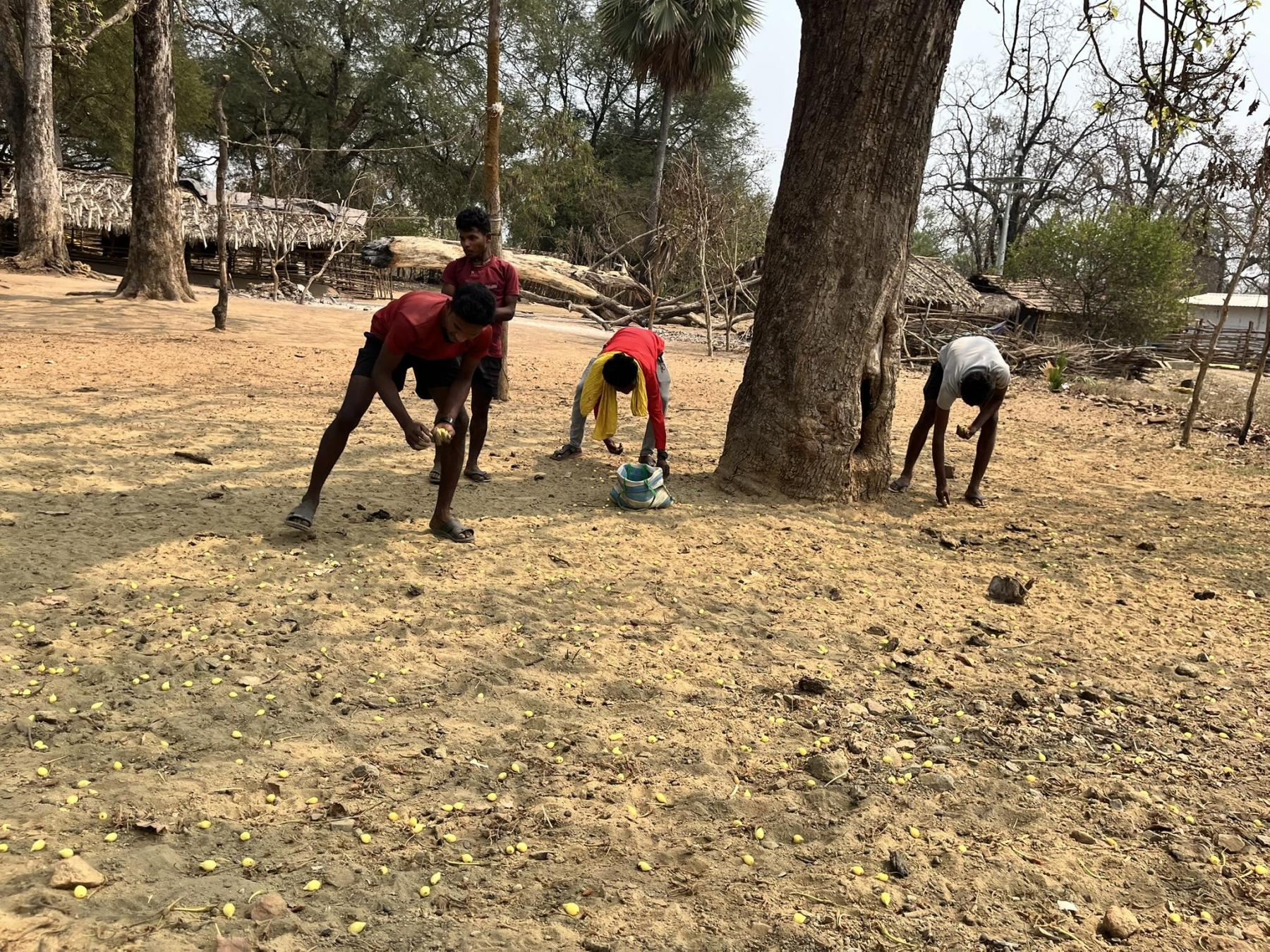
Farmers earn livelihood by picking Mahua during the season.
It is the season of the mahua (Madhuca longifolia), and the ground is laden with the fruit like a blanket. Ram Das, an eighteen-year-old Adivasi youth, and his peers are picking and collecting the mahua in order to sell it in the market. It is an early April morning and the sun is shining brightly on the Adivasi youths. In the moment, as they continue to collect the mahua, Das stops to point towards the trees and says, “This is what they want to destroy, the Adivasi forest and their land.”
Das has grown up in Bastar—located in Central India’s Chhattisgarh, Bastar is considered to be one of the most militarised zones in the world. For decades, the region has witnessed conflict due to the constant clashes between the national security forces and Maoist groups. However, with the coming of Bharatiya Janata Party (BJP) to power in the state’s by-elections in November 2024, the situation intensified following Indian Home Minister Amit Shah’s announcement of the start of ‘Operation Kagar’ in a bid to “eliminate Naxalism” from Chhattisgarh and different parts of the country by March 2026. Since the operation has commenced, the rampant increase in fake encounters has left the Adivasi community vulnerable, and the number of civilian casualties has increased—the local Adivasi is bearing the brunt of the conflict, as always.
I came back from Bastar recently, where I had gone to cover the current situation there as a journalist. To witness the resistance of the Adivasis, who are so steadfast, is always an eye-opening experience. Unlike last time, this visit was heavier, especially because so many Adivasi youth I met at these peaceful protests have been falsely incarcerated in various cases. In this photo-essay, my attempt is to bring images of protest sites—legacies of non-violent resistance by Adivasis—to a wider audience so that we, in the mainstream, can make an attempt to hear what the Adivasis have to say.
Civil society all over the world has condemned the operation, demanding a stop to the killing of innocent Adivasi lives. However, police officials at Bijapur District insist on not being able to provide proper data, with some claiming that no civilians have been killed during the operations. This statement contradicts various testimonies and reports coming from the region. Soni Sori, an activist and politician from the community, said that women and children have been the primary victims of rampant fake encounters. “The media needs to do its job and ask the authorities as to why such violence is taking place against Adivasi women and children,” she said.
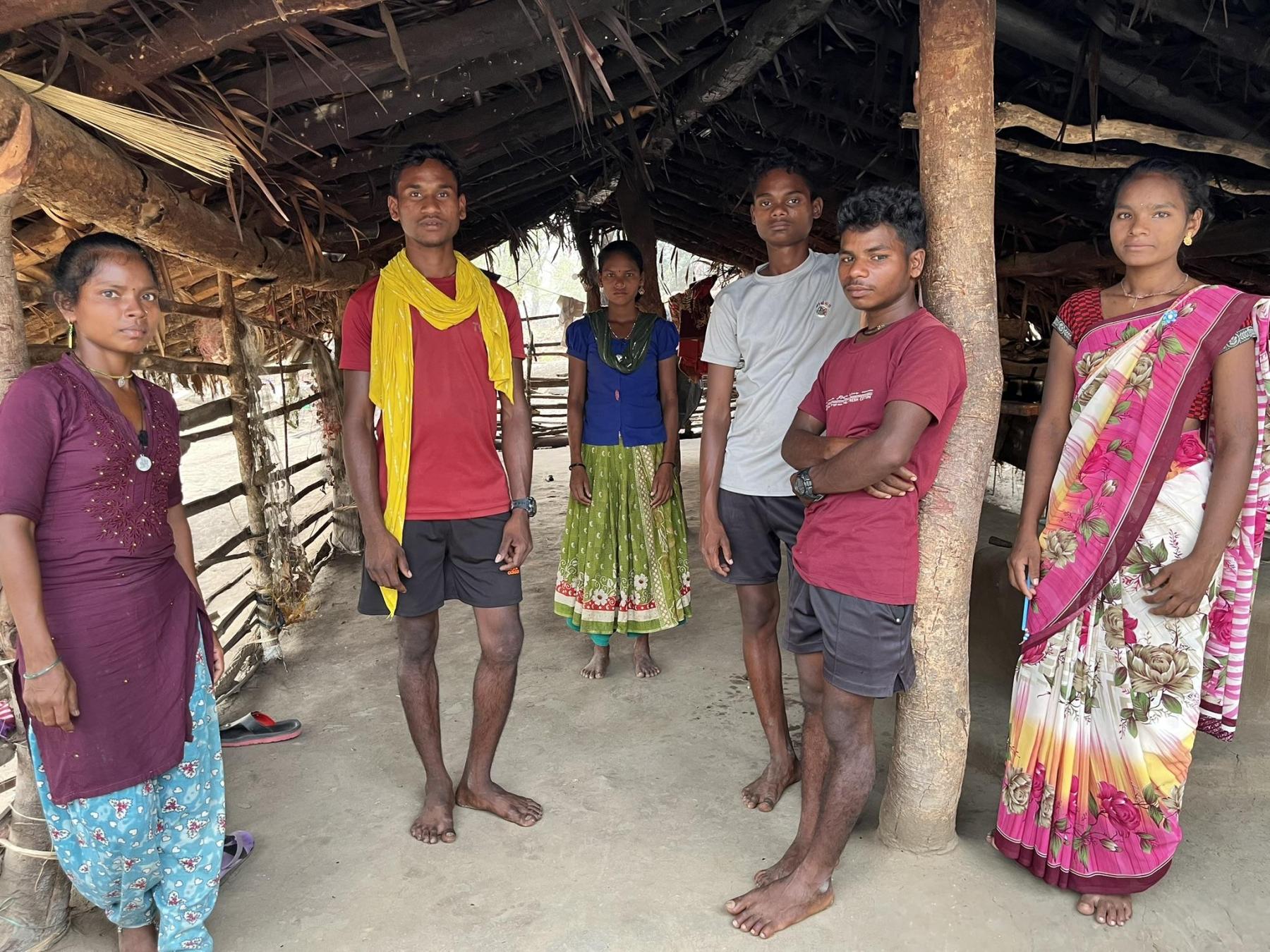
The youth continue to lead the Silger protest site, though under a different banner.
It is against such atrocities that a group of young ambitious Adivasi boys and girls, who had witnessed bloodshed since childhood, started Moolvasi Bachao Manch (MBM), a non-registered organisation set up in 2021. Fed up with fake encounters, various mining projects and construction of roads without the permission of the local Gram Sabha (a village-level legislative body in India), the youth formed the Manch as a forum for the rights of Bastar’s indigenous people. It held massive protests against corporatisation and militarisation in the region at forty-five sites across different parts of Bastar. However, in November 2024, the MBM was banned by the BJP-run Chhattisgarh government under the Chhattisgarh Special Public Security Act 2005, and the organisation has since then been forced to disband. Of the forty-five protest sites, only a couple remain, but under a different banner.
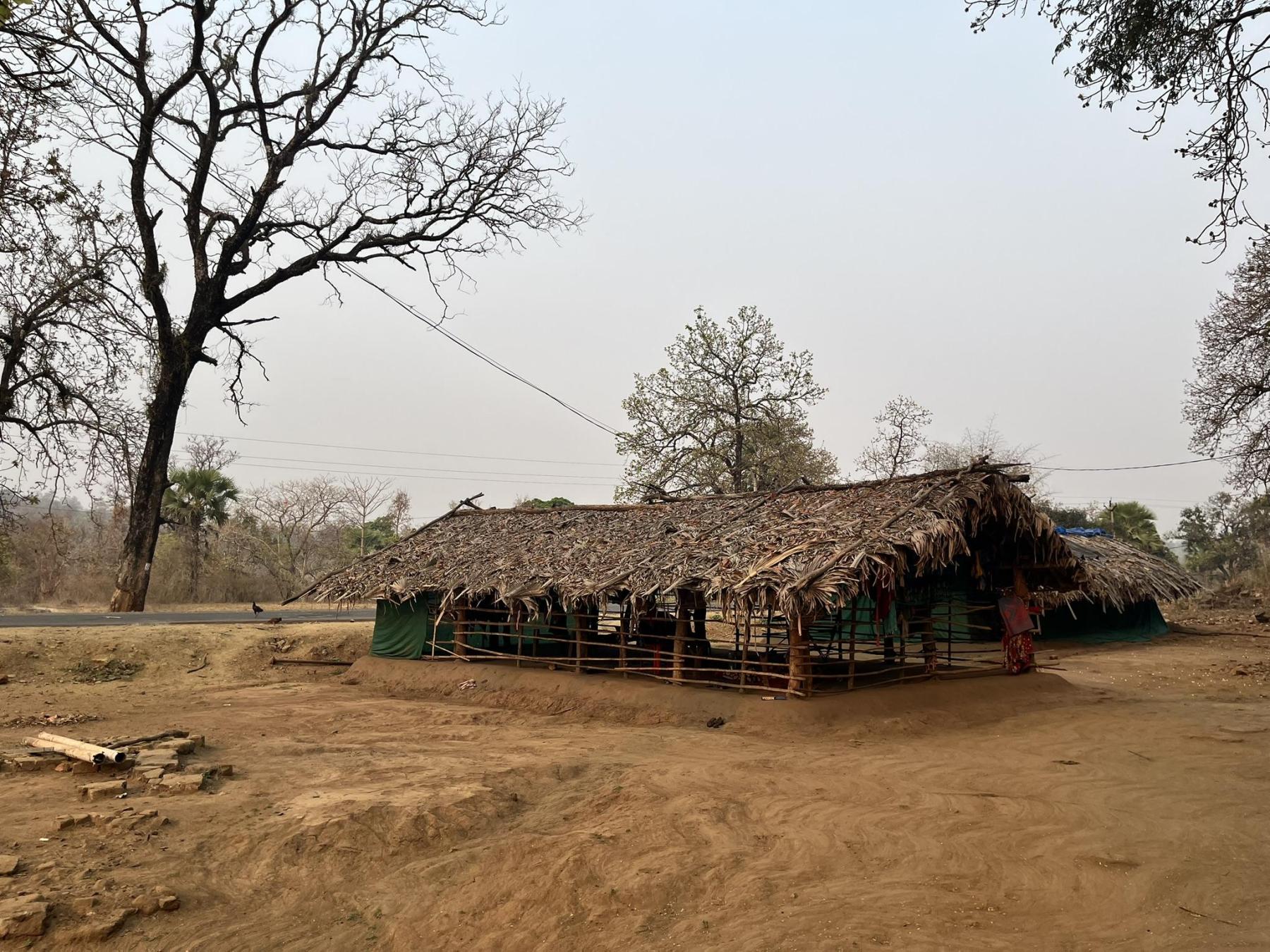
The Silger protest site in the Bijapur District.
Das is now holding one of the few remaining protest sites. Located in Silger, this protest site has been ongoing since 2021, when a massive protest was started against the forceful construction of roads, various mining projects, the opening of new CRPF camps and fake encounters.
Passing through the beautiful Abujhmarh forest and various CRPF camps, and close to the border between Bijapur and Sukma districts, one reaches Silger, a small Adivasi village. Once known to be a pivot Maoist area, the village came into international attention after three protestors from the Gond tribe were killed in police firing on 17 May 2021. Das still remembers how Raghu Midiyami, Suneeta Pottam and various other Adivasi youth came together to start MBM. “As young people, we admired them. They inspired us,” Das said.
Midiyami and Pottam have since been arrested by the Chhattisgarh police, while the former has been slapped with the draconian Unlawful Activities (Prevention) Act, 1967 (UAPA). For Das and other young people, continuing the legacy of his seniors has now become a priority. The Adivasi youth began taking care of the protest site after Midiyami started gaining increasing responsibility as more protest sites opened up.
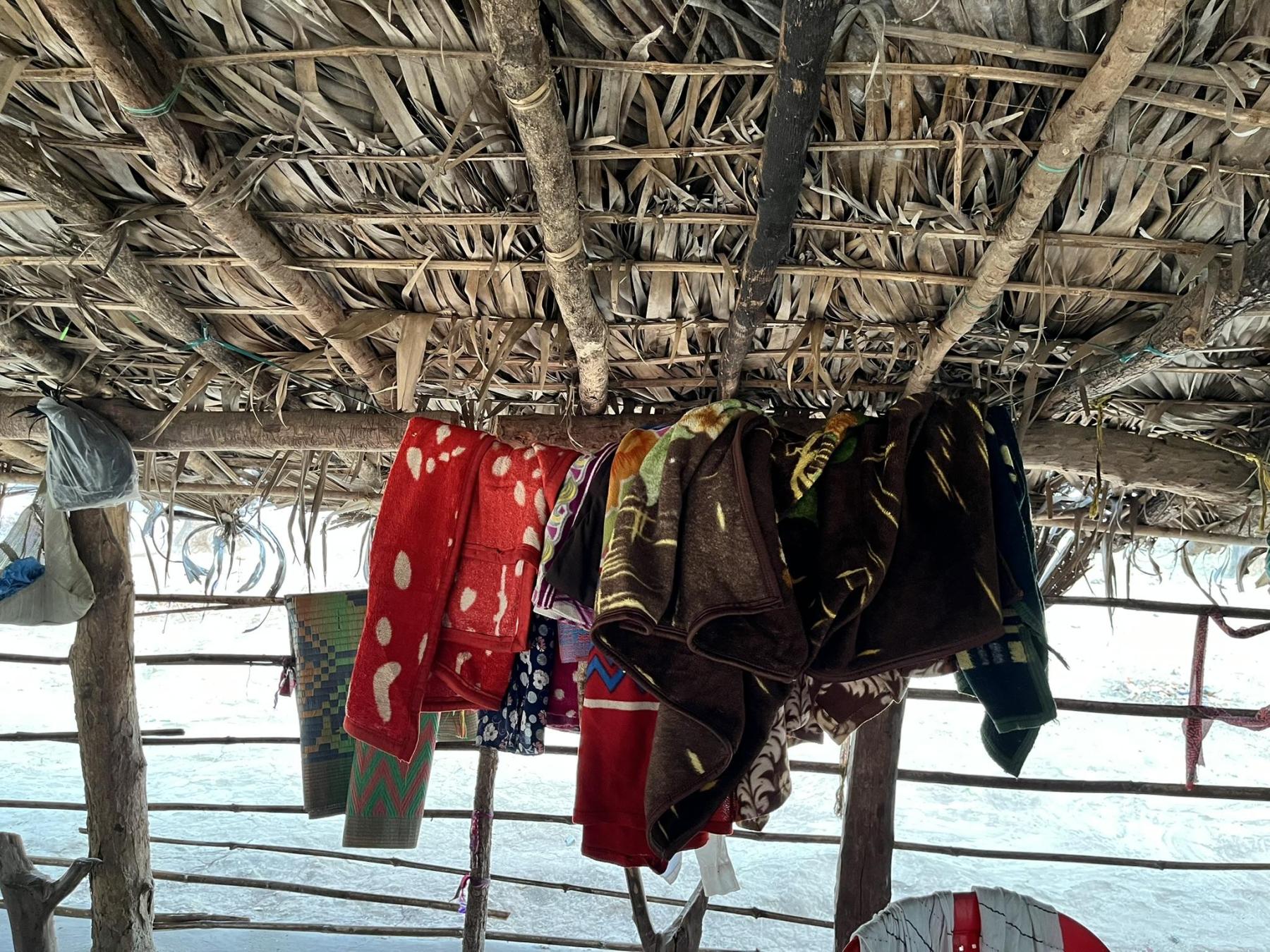
Silger protest site is still run by a few youth who have decided to take forward the legacy of those who started the fight against militarisation and anti-mining projects.
“Living in one of the most conflicted zones, we have only seen atrocities. This protest, although small, will be continued because an idea cannot be killed,” the youth said with determination in his eyes. Joga, who is seated besides Das and is also part of the sit-in protest, said that since the government has changed from Congress, the atrocities have increased. “We won’t say the situation was better before, but now, it is plain difficult. The security forces threaten us to leave the protest site every day, but we will not go,” he said. Although there are only a handful of protesters left, they have pledged to stay. This comes after all the protest sites were forcefully removed by the security forces and when, at the time of my visit, encounters were taking place every day.
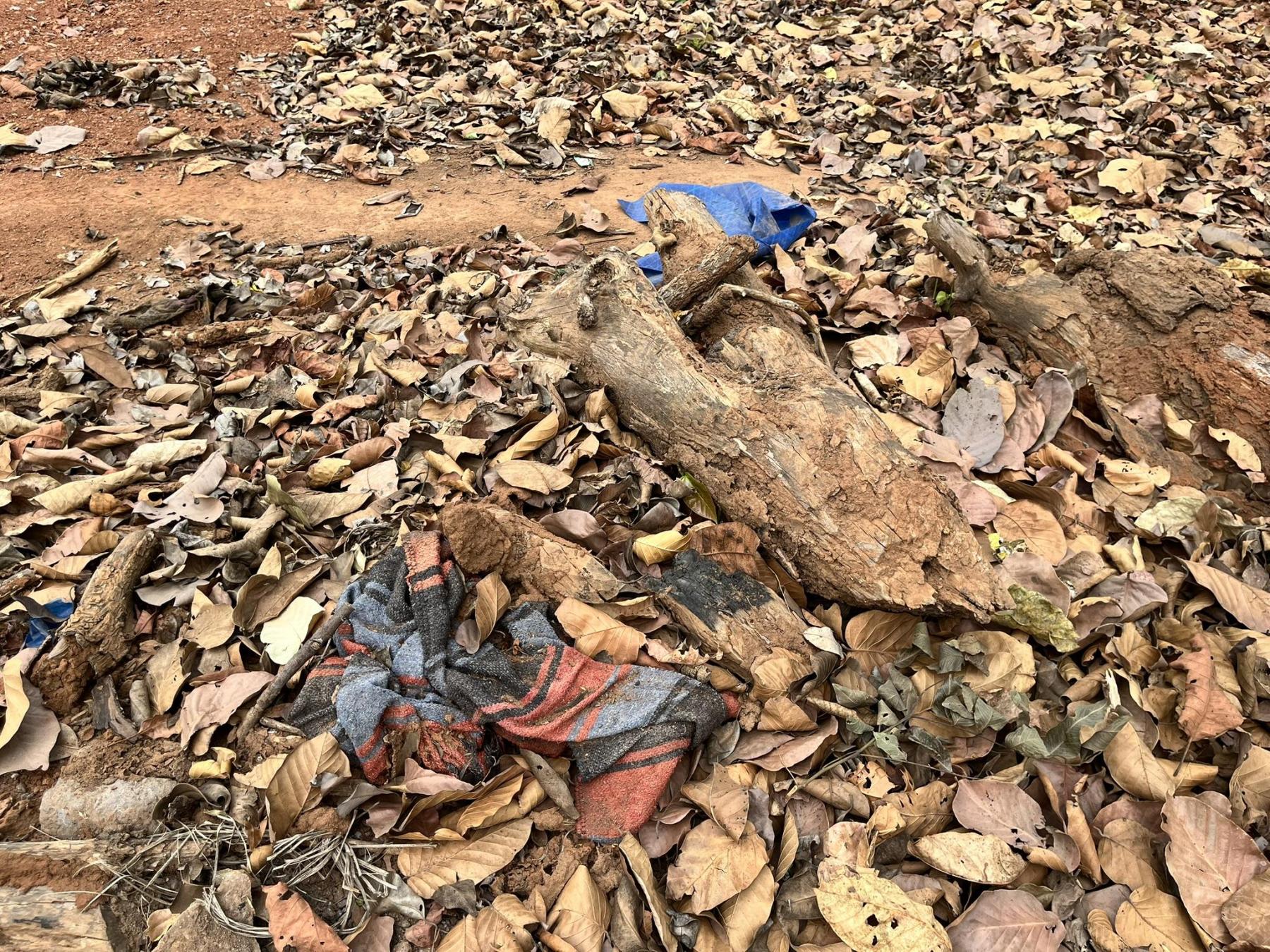
Remains of the Orchha Protest site. The Chhattisgarh Police forcefully removed the site in March earlier this year.
Orchha, another protest site located in the Abujhmarh forest in the Narayanpur district of Chhattisgarh, had been set up to protest against the mining projects and fake encounters. Besides the regular encounters, there is heavy surveillance taking place. But what was once a thriving place of resistance now lay abandoned. Only the remnants of the protest site have been left behind. One of the leaders said that the police are arresting anyone associated with the protest, while others are in hiding as false cases are being slapped on them. “Everyone is scared,” he said.
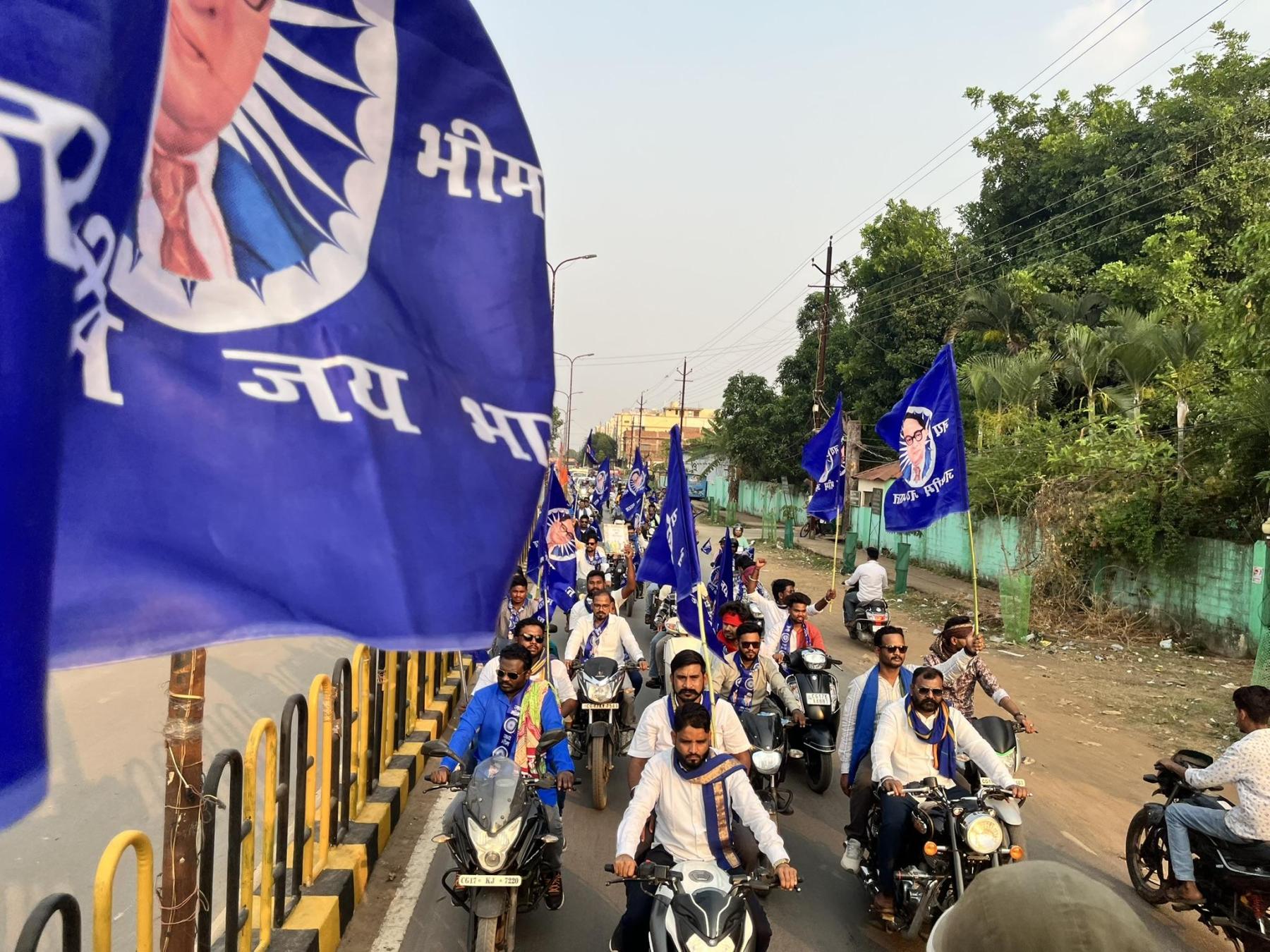
Bhim Army taking out ‘Save Constitution’ rally in Jagdalpur.
During a “Save Constitution” rally by Bhim Army in Jagdalpur, Hidme Markam, an Adivasi activist who has been falsely incarcerated in various cases, said that this is the government’s attempt to heavily break the tribals. “Fake encounters in the name of Naxalism shows that there is no empathy towards the innocent Adivasi,” she said with anger. “The banning of legitimate protests by the Adivasis is shutting down their voice,” she added.
The protests were also talking about the proper implementation of the Panchayats Extension to Scheduled Areas Act (PESA), 1996. The Fifth Schedule of the Indian Constitution outlines provisions for the administration and control of Scheduled Areas and Scheduled Tribes and grants special powers to the State Governor to administer these areas, limiting the effect of central and state laws and ensuring the protection of tribal land and resources. Thus, the act empowers tribal villages (Gram Sabhas) in self-governance and protects their right to make key decisions about their land, water and forests. They can approve or reject big projects like factories or roads.
However, the Gram Sabha is not being involved before the implementation of such projects, which goes against the Indian Constitution and the PESA Act. The resistance came because people were angry. “This is our jal, jungle, zameen (water, forest, land)! Who are these outsiders? We are not asking them to not start projects, but they need to take our permission,” Das said. To cut trees or bring in private players to start a coal mining project without even speaking with the Gram Sabha—which ought to decide whether or not a project is permissible—is unconstitutional.
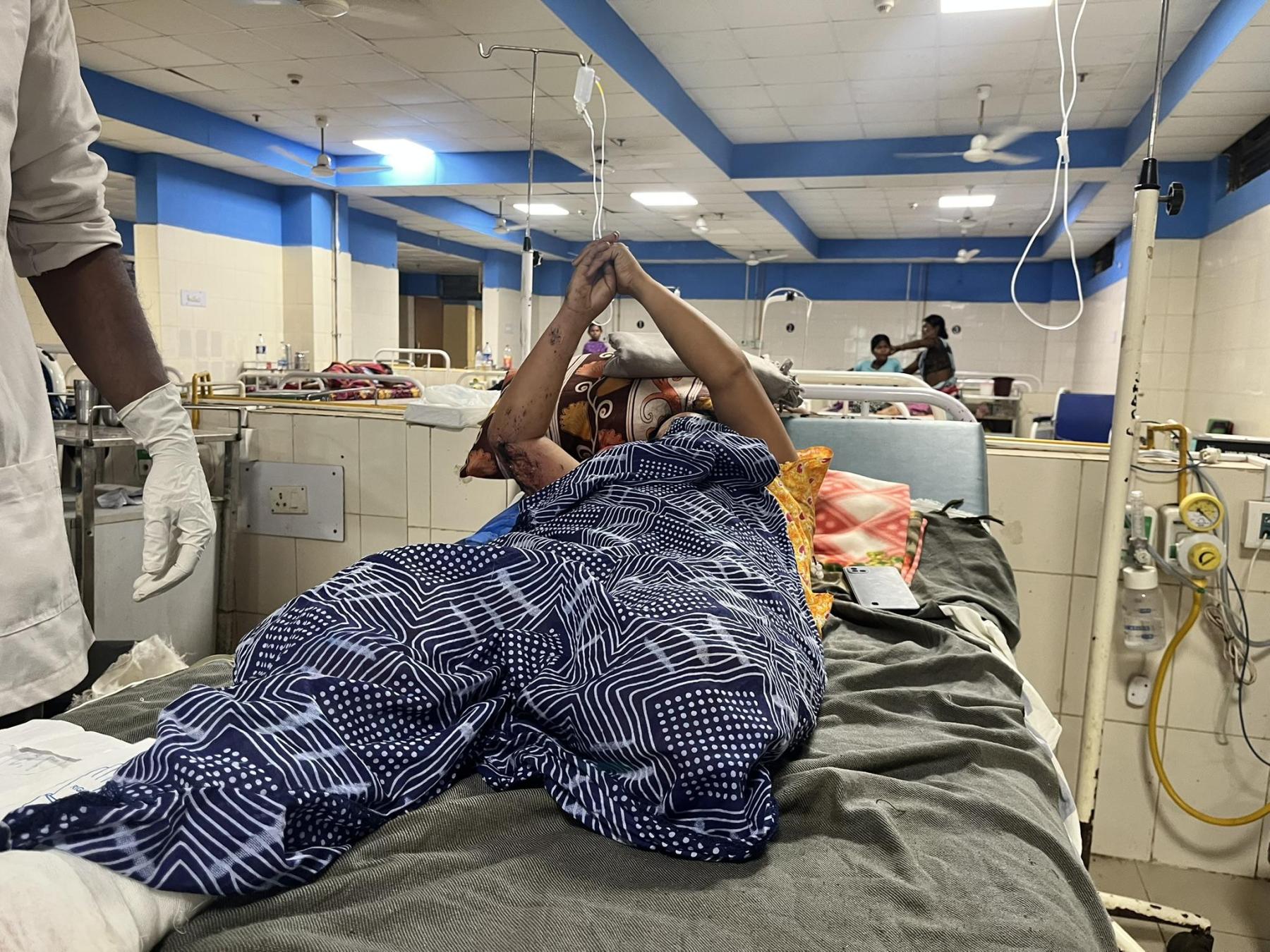
(TW: Graphic photo) Saraswati who was admitted at the hospital after she had stepped on an IED.
One cannot deny that it is the innocent Adivasis who are bearing the brunt of the conflict. Twenty-three-year-old Saraswati is withering in pain as the doctors change her bandages. A few weeks ago, Saraswati mistakenly stepped on an Improvised Explosive Device (IED) that forced doctors to amputate her left leg. “This is what we have to go through. Just innocent villagers trying to live their lives,” said Vinesh Podiyam, a friend of Saraswati.
IEDs are usually set up by the Maoists in a bid to attack CRPF personnel on rounds. Despite the state stepping up military operations deep inside the jungles, the insurgents have not backed down, with regular reports of either civilians or security personnel being killed due to explosives. As the situation remains tense in the mineral-rich Bastar, encounters—many fake—continue to take place, despite a demand by the Maoist party for peace talks. The CPI (Maoist), through multiple letters and press interviews, expressed its willingness for a “unilateral ceasefire, unless attacked.”
On 27 April 2025, civil society organisations and individuals came together for a virtual press conference to demand immediate peace talks between the government and the Communist Party of India (Maoist) (CPI[Maoist]). Civil society called attention to the severe human cost of the ongoing conflict, especially among Adivasi communities in Bastar and surrounding areas. An appeal for an immediate ceasefire was signed in solidarity by more than 300 concerned citizens and organisations. According to the statement, the appeal has been sent to President Droupadi Murmu, Prime Minister Narendra Modi and Home Minister Amit Shah.
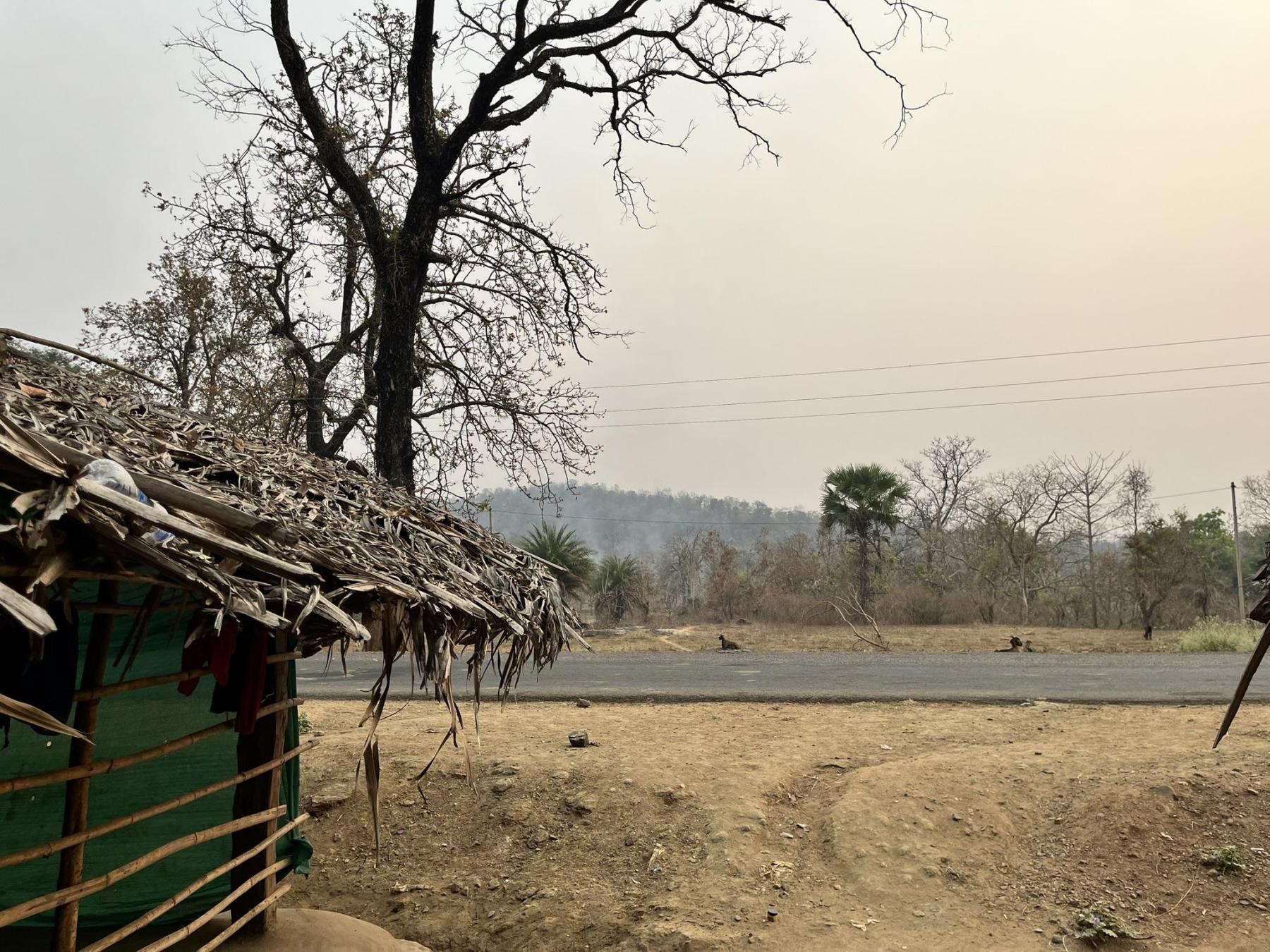
The road going through Silger. Moolvasi Bachao Manch was also protesting against the construction of this road as it was built without the approval of the Gram Sabha.
Till now, there has been no word on whether the peace talks will take place or not. For Das, Joga and Saraswati, life has been at a standstill, but the fight for land will never end. “We are prepared to die,” Das said as I was about to leave. The last glimpse of those handful of youth as they smiled and waved goodbye is a sign that despite the continuous pressure and vulnerability in their lives, they continue to fight. “All I know is that we cannot stop. This is about our land, our forest, our trees that we grow and take care of. All I know is that we cannot give up,” Joga added.
The question also remains as to whether the forceful development imposed on the people be called a way to move forward? By forcefully cutting down trees to make a road or setting up CRPF camps that harass local Adivasi communities, will the authorities be able to justify this so-called ‘development’?
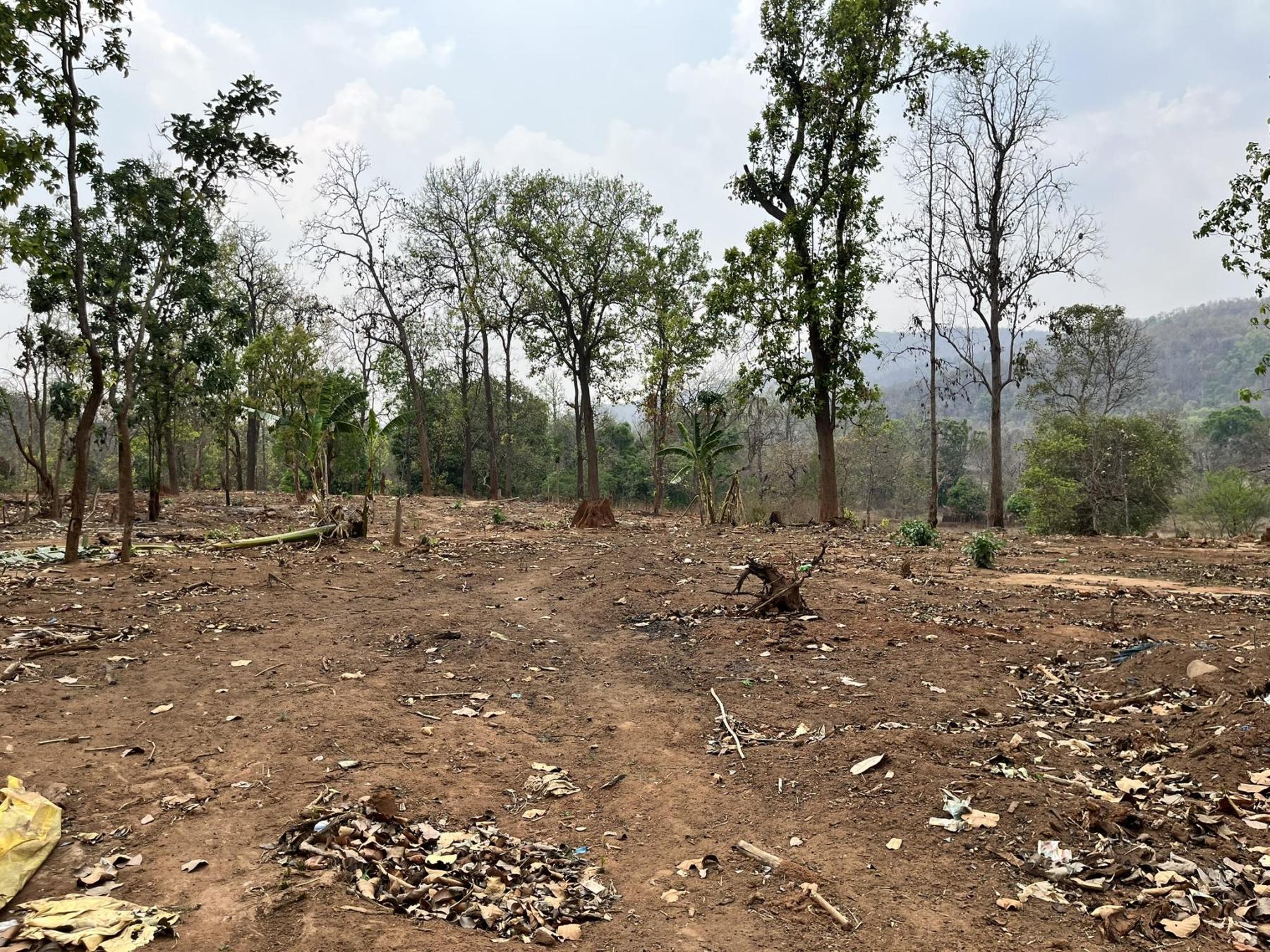
Remains of the Orchha Protest site. The Chhattisgarh Police forcefully removed the site two months back.
To learn more about works exploring the lives and experiences of Adivasis, read Jigisha Bhattacharya’s reflections on Shishir Jha’s Dharti Latar Re Horo (2022), Koyna Tomar’s two-part conversation with Aranya Sahay on his film Humans on the Loop (2024). Also watch Anisha Baid’s two-part conversation with Subhash Thebe Limbu on the concept of Adivasi Futurism.
All images by and courtesy of Nikita Jain.




